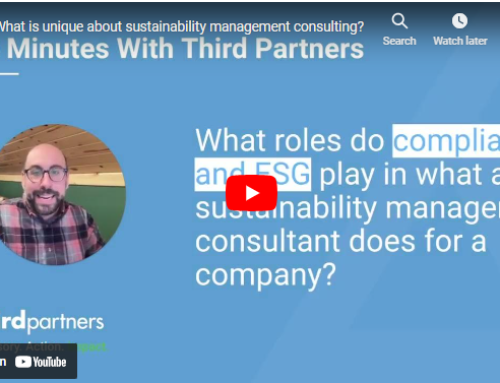What is sustainability reporting?
Sustainability reporting is a voluntary process through which organizations may document their commitment to social and environmental responsibility. Integral components of a sustainability report include disclosure of an organization’s past performance (using data that can be displayed visually through infographics), as well as measurable, science-based targets for future activities. Within the context of established frameworks, sustainability reports have flexibility to be tailored to the values of a specific organization.
Why prepare sustainability reports?
Even if your organization is already engaging in sustainable practices, it might not receive the recognition that it deserves unless it communicates these practices in a credible manner. Now is the ideal time to start.
Although the COVID-19 crisis has had devastating economic consequences, it also presents opportunities for businesses to regroup with a renewed focus on sustainability. According to research from J.P. Morgan, “investors are viewing the crisis as a wake-up call that accelerates the need for a different approach to investing, as parallels have been drawn between the unforeseen risks of a pandemic and issues such as climate change.” This finding resonates with BlackRock’s stance that climate risk is investment risk. Moreover, both COVID-19 and climate change have laid bare the need to address racial justice, and companies may do so through the social components of sustainability reports.
Besides attracting investors, companies’ motives for preparing sustainability reports may include:
(1) showing commitment on complex issues to concerned stakeholders;
(2) being transparent and soliciting feedback in response to demand from investors, regulators, advocacy groups, and NGOs;
(3) highlighting relationships with stakeholders;
(4) reducing risk by managing and communicating impacts;
(5) enhancing or protecting reputation; and
(6) growing shareholder and brand value.
In the spirit of transparency, sustainability reports should not only celebrate a company’s positive impacts – they should also be truthful about any negative impacts and how the company will mitigate them.
Where to start?
A number of independent organizations have developed frameworks for sustainability reporting; popular examples include the Global Reporting Initiative (GRI) and CDP (formerly Carbon Disclosure Project). Given that these frameworks have been widely adopted and recognized, they allow investors, customers, and other stakeholders to make fair comparisons between organizations.
The GRI framework considers a combination of economic, environmental, and social topics. For instance, one of the environmental topics is biodiversity, which involves topic-specific disclosures (e.g., habitat that an organization has protected or restored; Red List and national conservation list species that occupy an area where an organization operates). Some of the other environmental topics are materials, energy, and waste. GRI recently announced a collaboration with another reporting organization, the Sustainability Accounting Standards Board (SASB), aiming to reduce confusion over the many disclosure options.
The CDP approach is different in that it collects data on companies and cities through questionnaires pertaining to environmental issues, such as climate change and water security. CDP then assigns scores and compiles lists of the companies and cities that are demonstrating the strongest environmental leadership.
This can be overwhelming; we hear that a lot. Third Partners can help your organization through full-service sustainability reporting, using an easy online system (geared especially towards mid-size brands and manufacturers). As part of this service, we analyze how your organization compares with competitors in terms of key sustainability metrics and how to stand out with best practices.
If you are ready to bring your organization up to speed on sustainability reporting, please get in touch with us for a free consultation.



